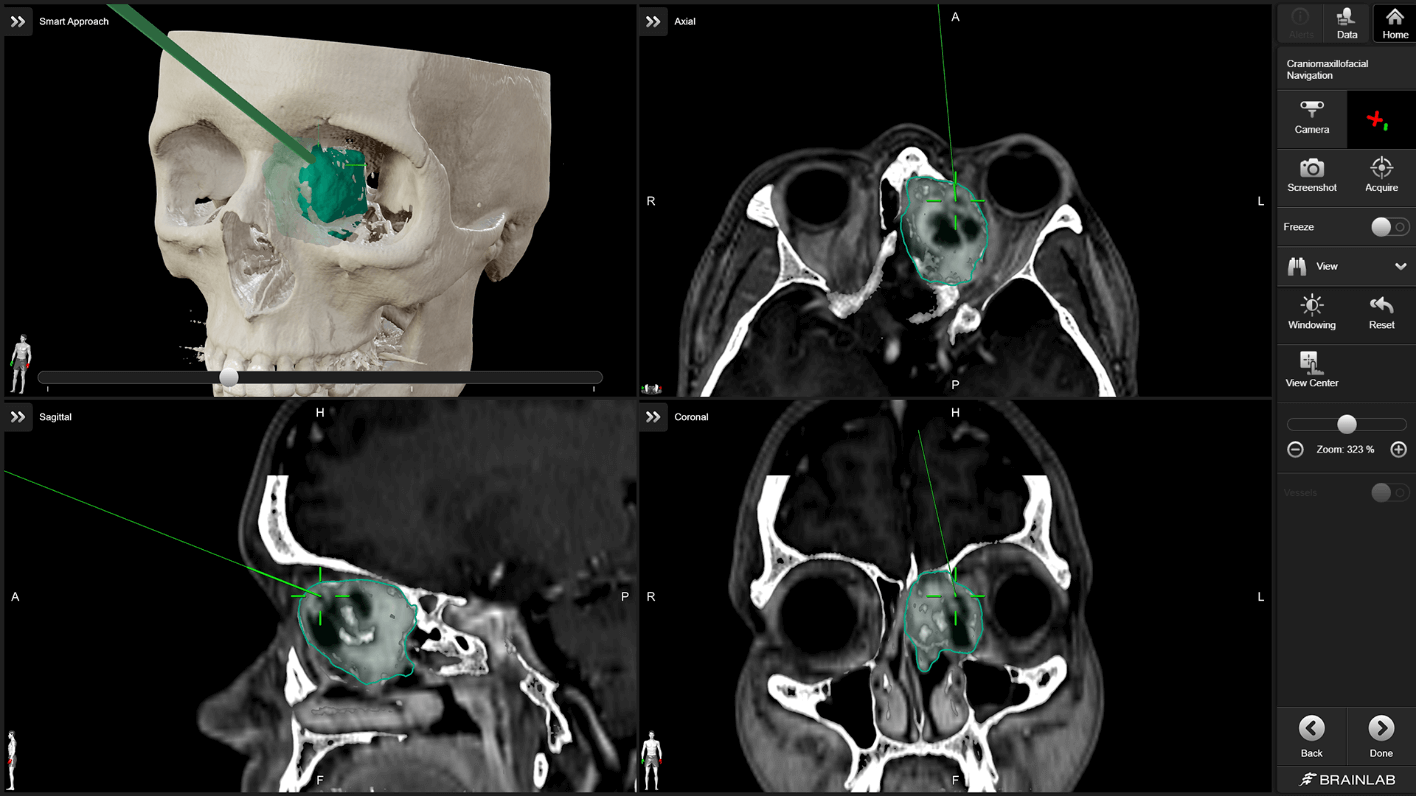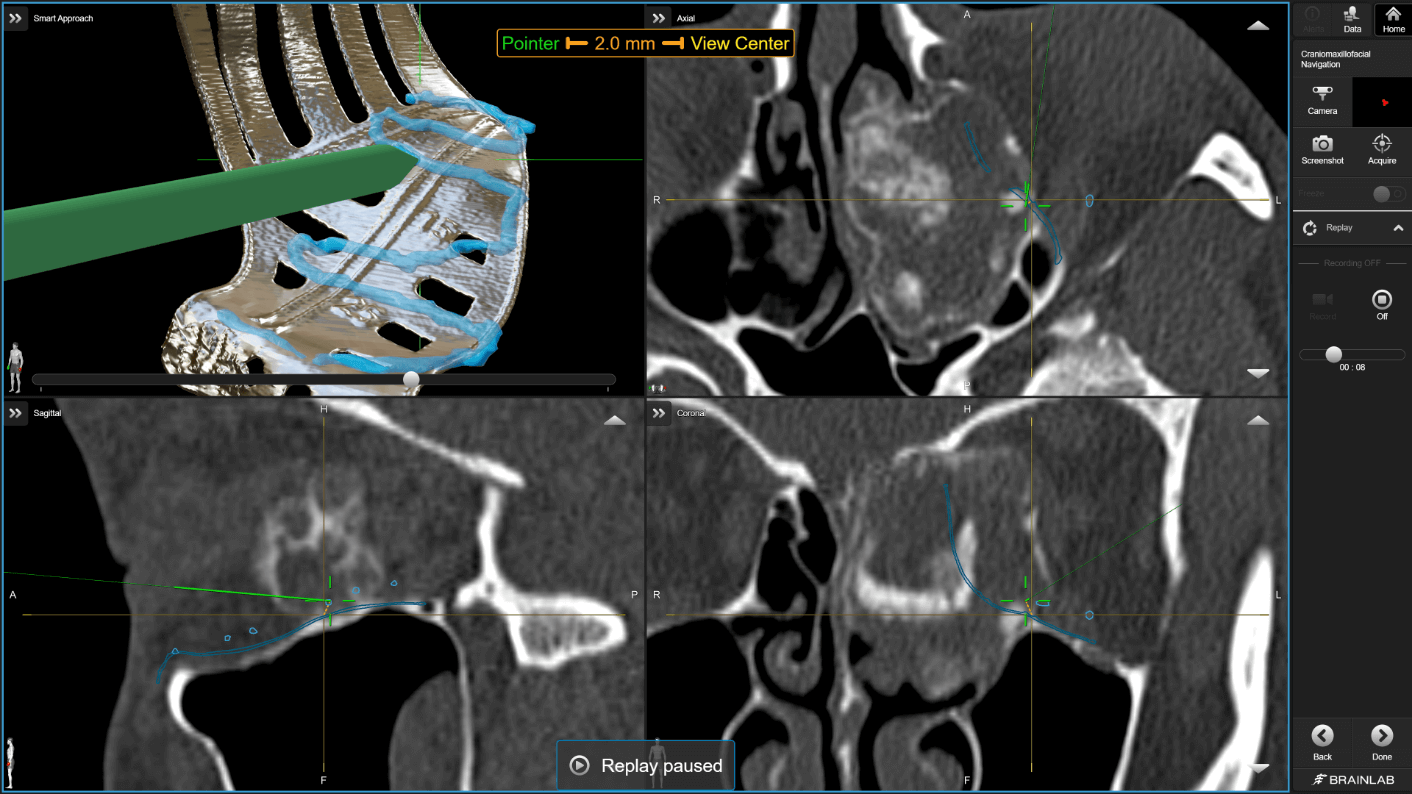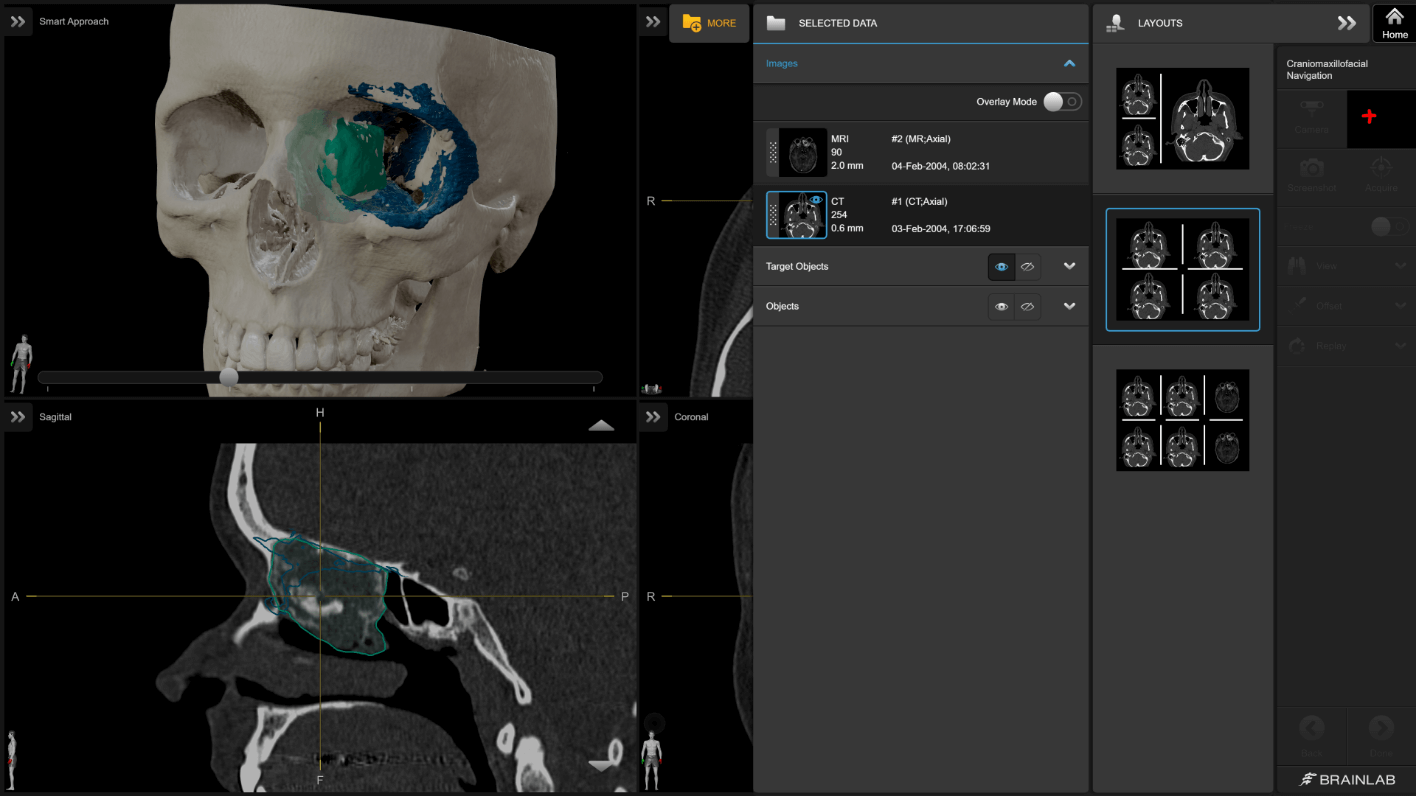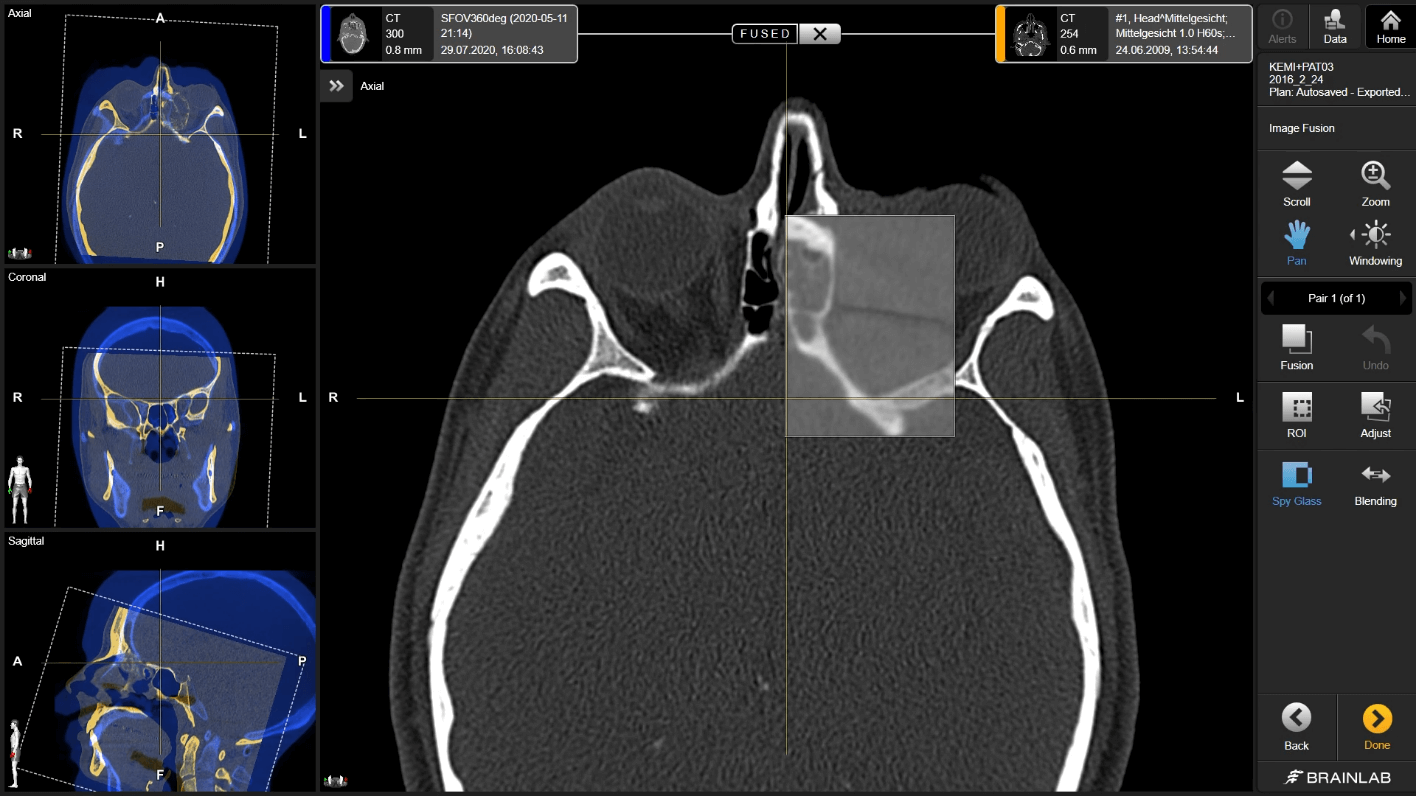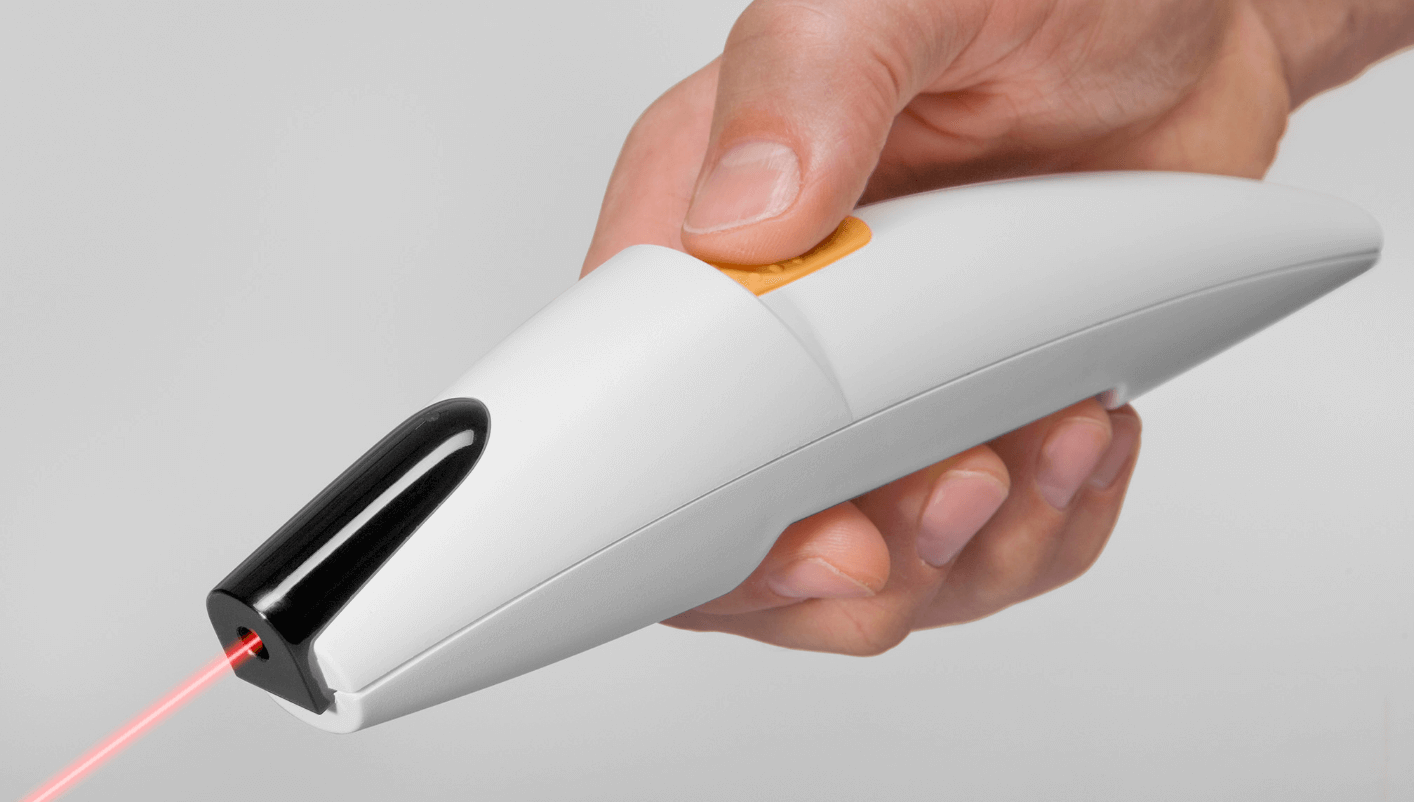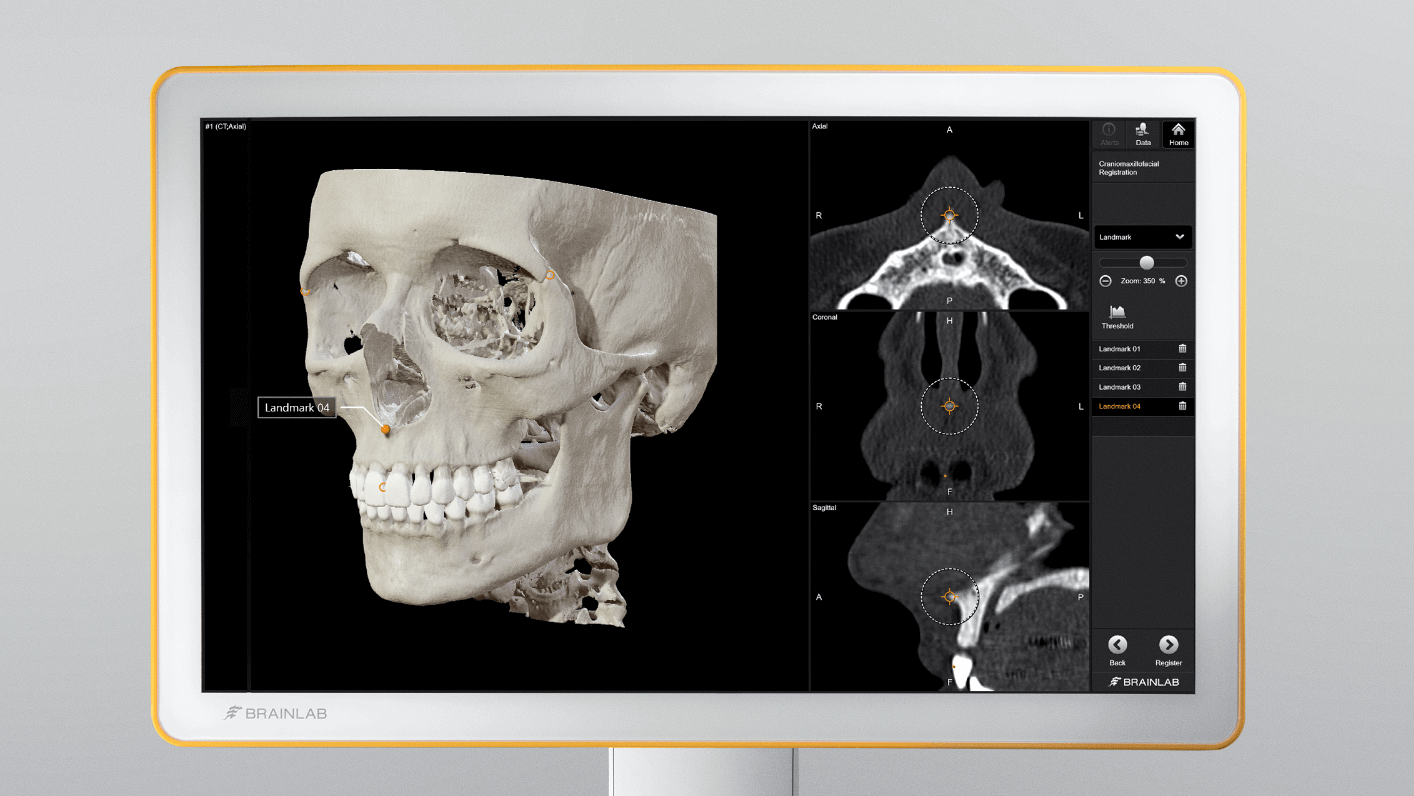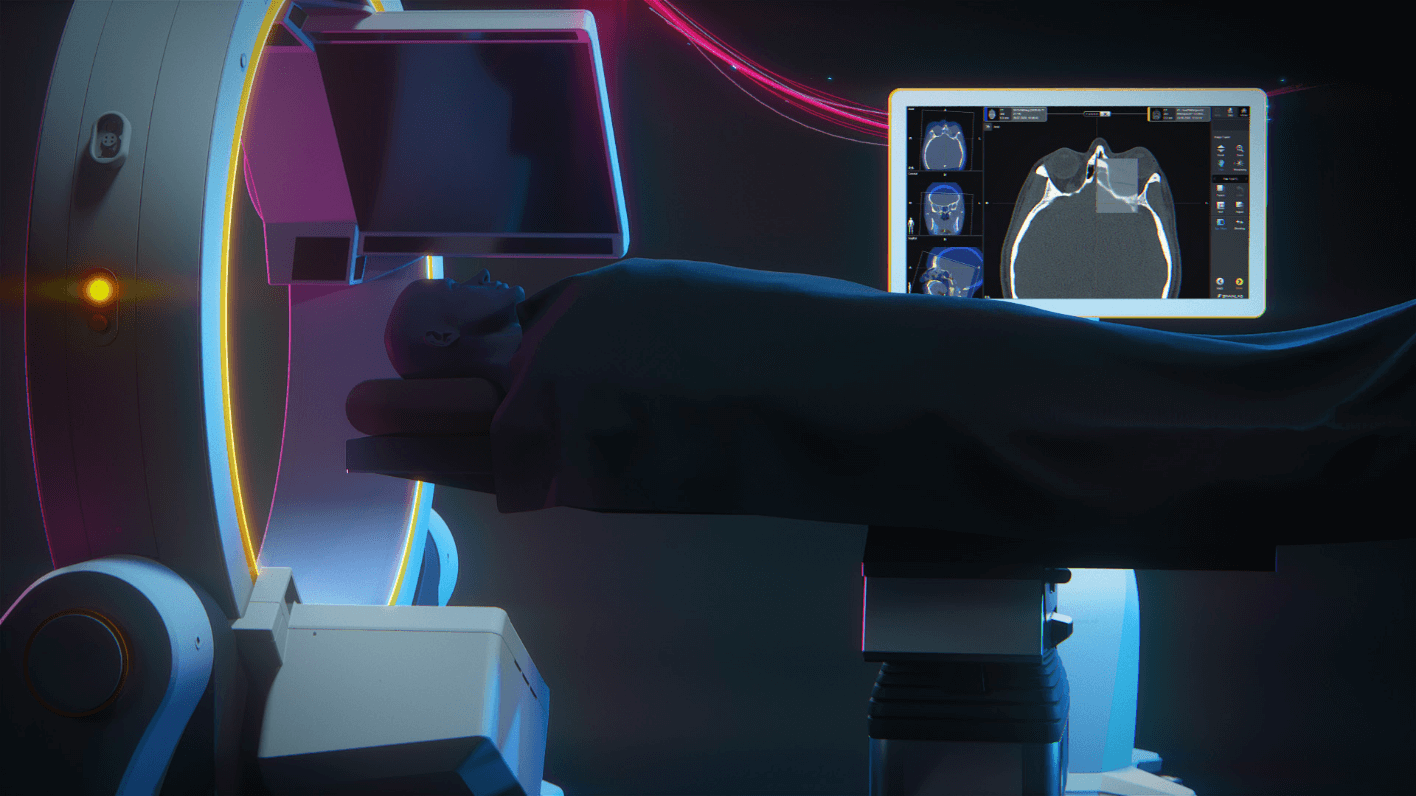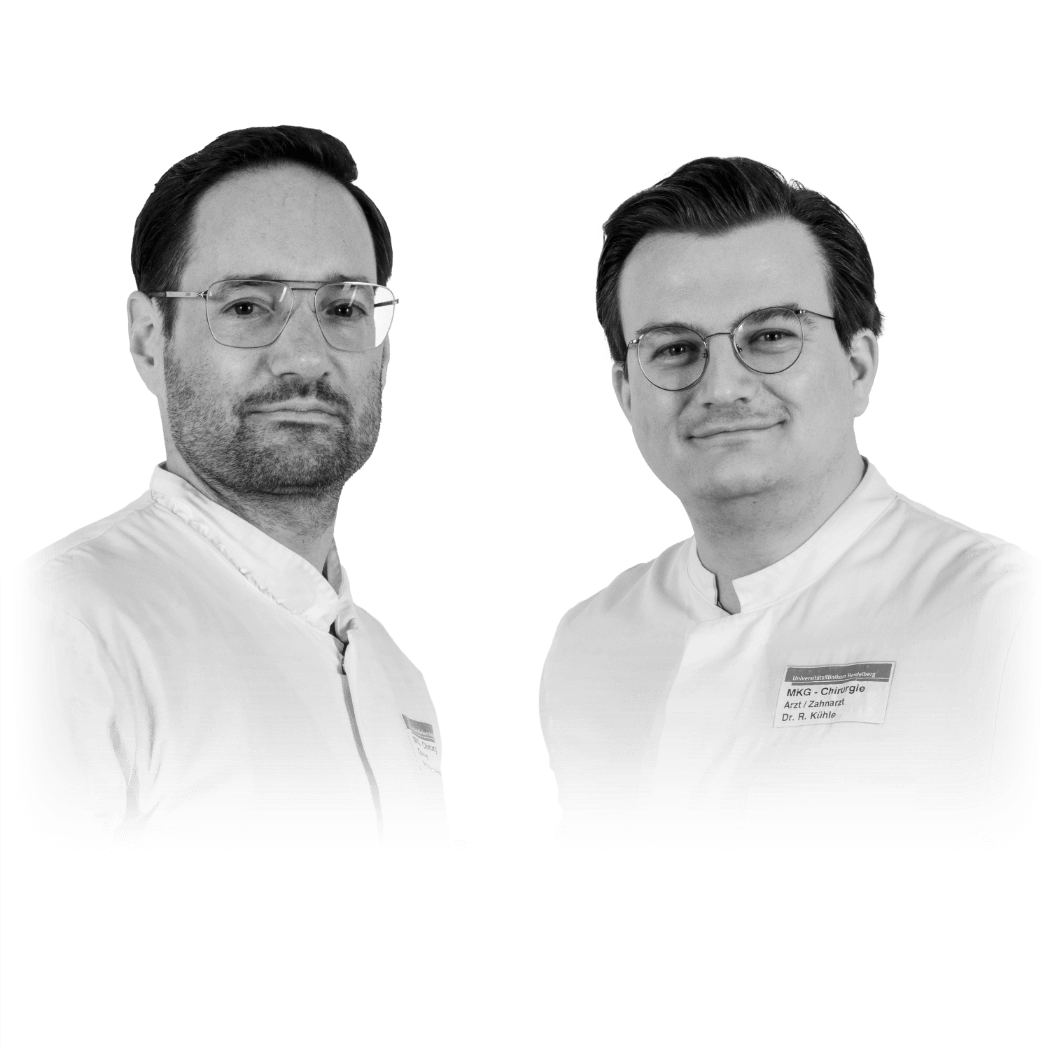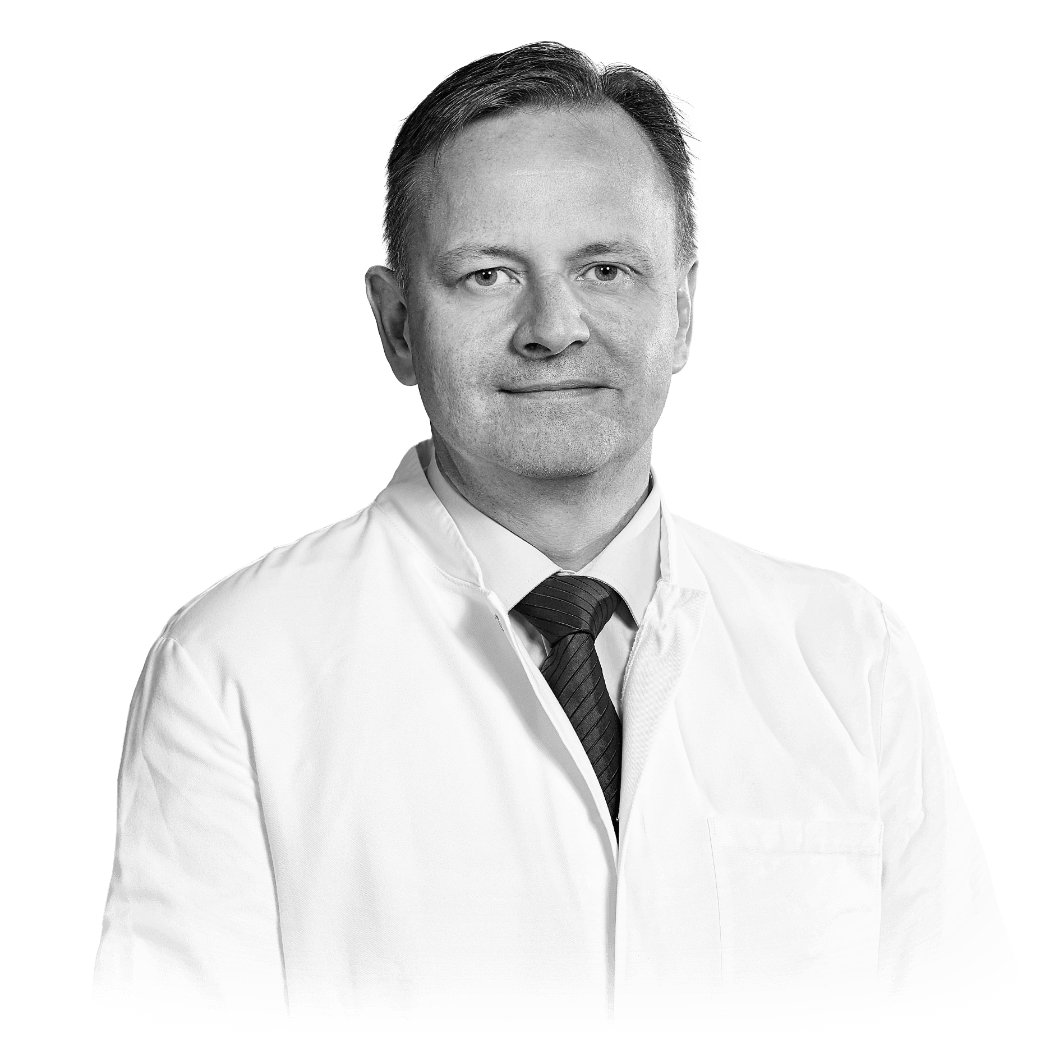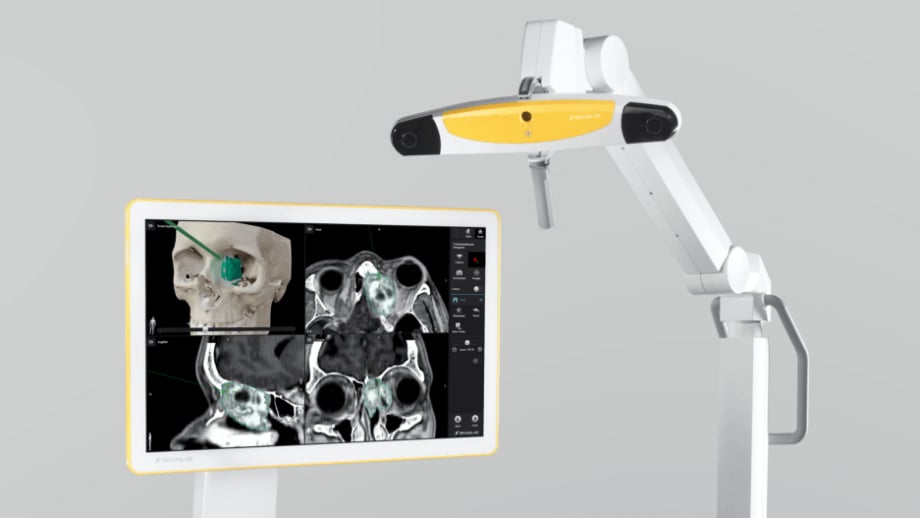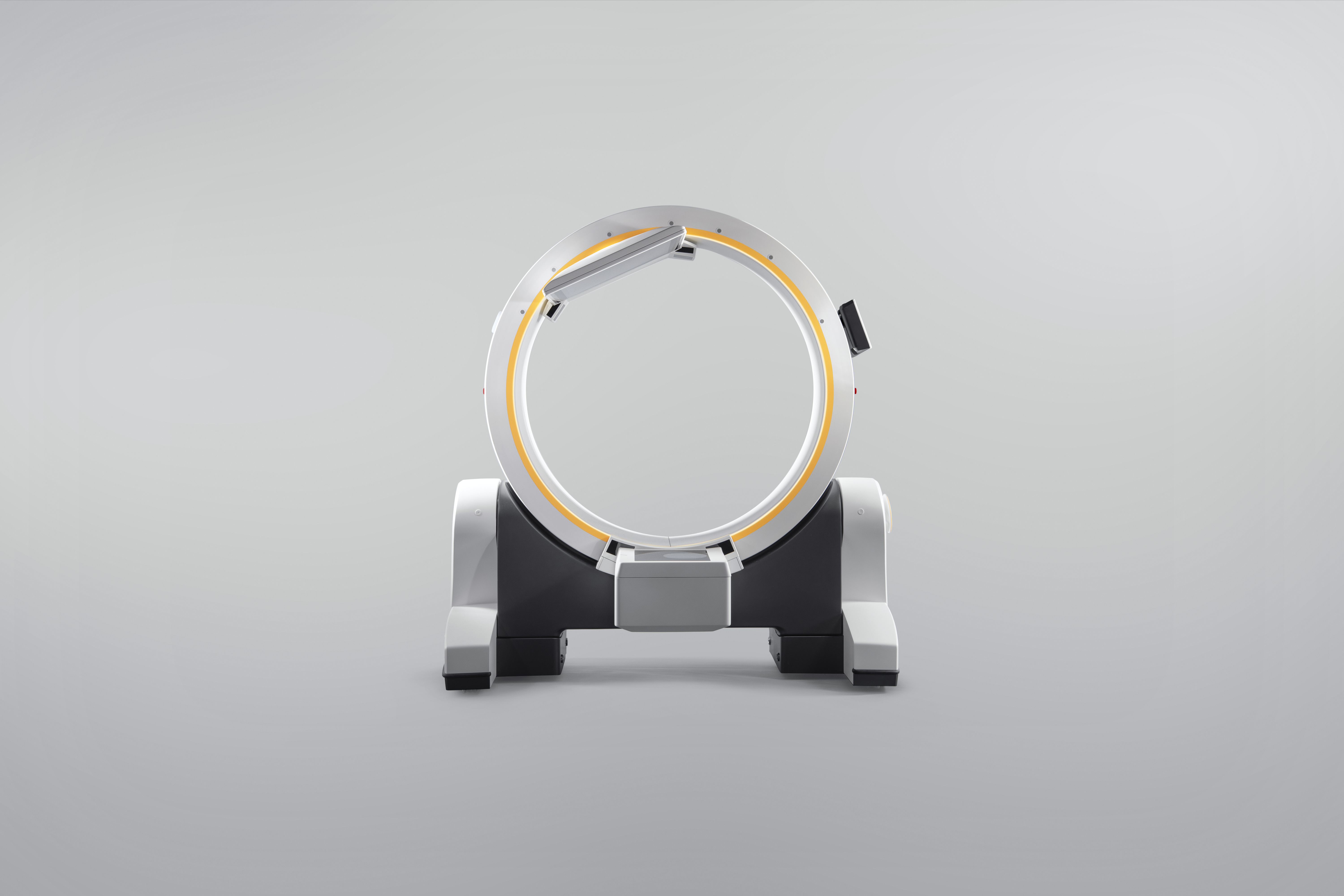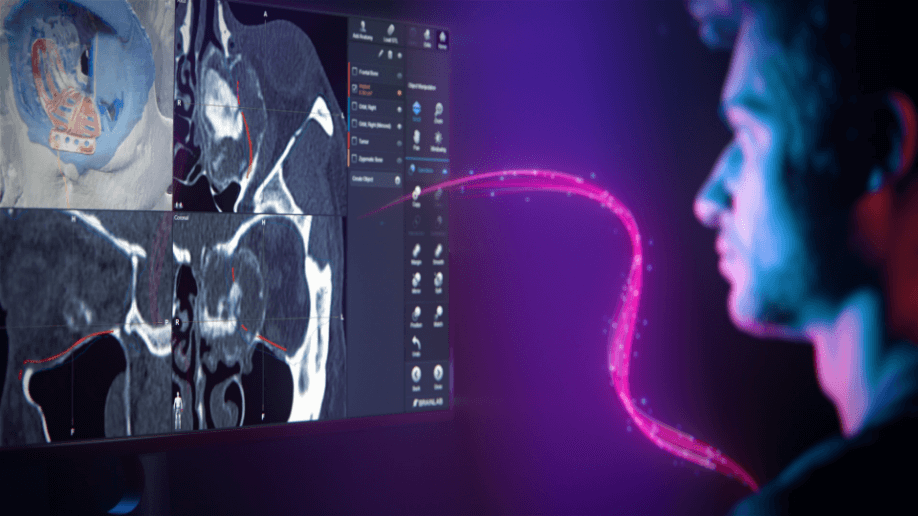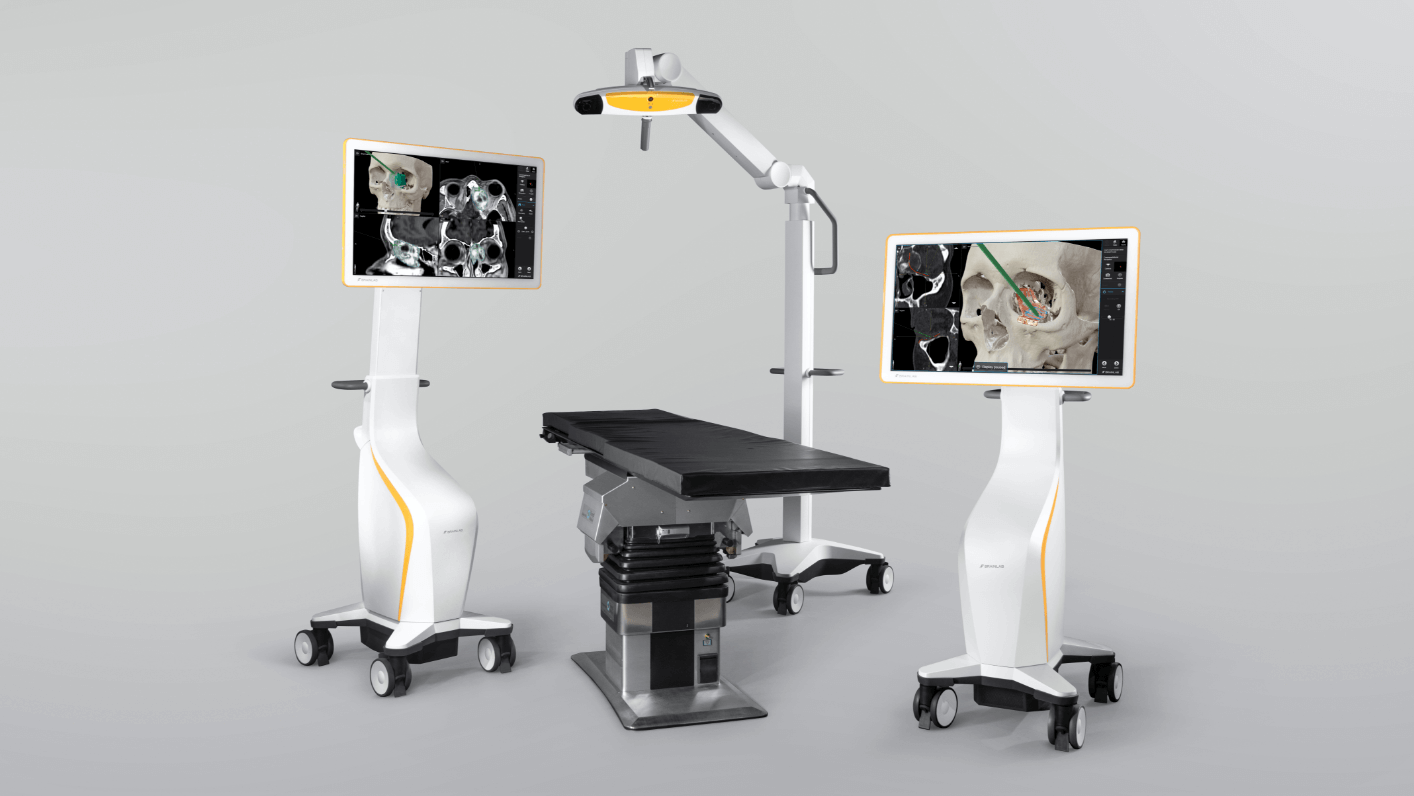Real-time realization of your surgical plan
Brainlab Craniomaxillofacial (CMF) Navigation enables you to achieve your desired outcomes for mid-facial reconstructions and tumor resections using real-time image-guided realization of the surgical plan. Clinicians can verify tumor removal, repositioned bone fragment and final implant positions. Intraoperative navigation and imaging allow you to stay on track throughout the procedure and be sure to avoid critical structures like the optic nerve.
How does our Craniomaxillofacial Navigation technology
help keep procedures on track?
Improved functional outcomes and aesthetics
Craniomaxillofacial Navigation supports clinicians in localizing critical structures, like the optic nerve or posterior ledge. It improves functional outcomes by reducing diplopia or enophthalmos and restores facial symmetry beyond conventional surgical techniques.
Transfer all planned data with Brainlab Elements to the navigation system for image-guided realization
Avoid critical structures and arrive at target structures with enhanced visualization and real-time instrument tracking
Improve functional outcome and aesthetics compared to conventional surgeries with navigation guidance along the reconstruction
Are you ready for real-time realization of your CMF surgical plan?
Flexibility with Craniomaxillofacial Navigation includes a broad range of registration options and integration of imaging devices and instruments to fit your procedure requirements.
What our customers are saying2
How Brainlab technologies support the craniomaxillofacial workflow
Not yet commercially available in several countries (CE mark available). Please contact your sales representative
The statements of the surgeons reflect only personal opinions and experiences and do not necessarily reflect the opinions of Brainlab or any affiliated institution.

